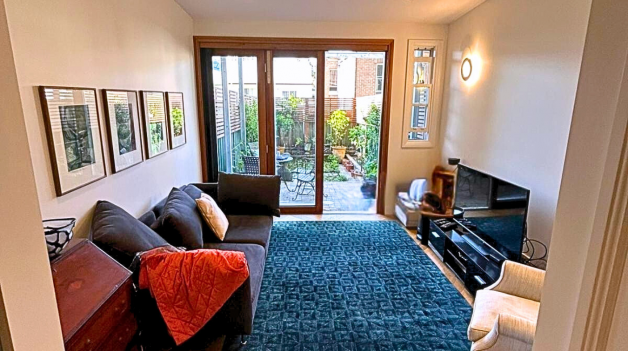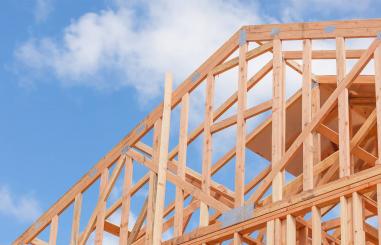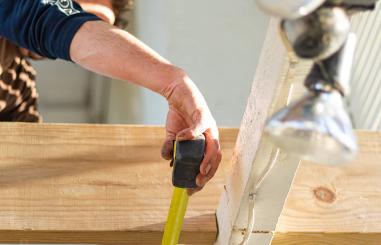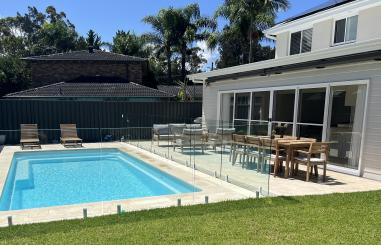There’s nothing like a spring or summer day in New South Wales; clear skies, warm winds, and that feeling that your home should be part of the outdoors, not just a box you live in. At Prescom Constructions, we build with NSW conditions in mind, from coastal breezes to inland heat. In this post, you’ll find five design ideas that make your home more comfortable, stylish, and suited to NSW.
In NSW, whether you’re in the coast, suburbs, or bushland fringe, homes that open up to the outdoors feel better. Sliding doors, bi-folds and level thresholds connect living rooms to patios and gardens. That flow isn’t just pretty; it encourages natural airflow, more effortless entertaining, and a stronger connection to outdoor spaces. Trades should focus on aligning floor levels, designing robust door frames, and weather seals that stand up to NSW sun and storms.
We Aussies love eating outside, but the sun can be unforgiving. In NSW, designing a covered alfresco area or pergola with adjustable louvres or shade sails is essential. With ceiling fans or outdoor lighting, it becomes usable at dawn or dusk. Add waterproofing and drainage details (especially for summer storms) so the area remains functional year-round.
Wind direction in NSW varies: coastal areas experience sea breezes, while the inland regions receive cooler evening winds. Position windows and vents on opposite walls (cross-ventilation), use high windows to let hot air escape, and include louvres or ventilated roof spaces. The goal: let nature do the cooling. Trades must coordinate window sizes, frame sealing, and ventilation paths so the airflow is smooth, not drafty.
Skylights or roof-lights bring in natural daylight, brighten hallways and kitchens, reduce the need for electric lighting, and make rooms feel larger. In NSW, choose units with UV filters or blinds to control heat. Placement matters too; avoid direct harsh sun over sleeping or work zones. Ensure flashing, waterproofing, and insulation are detailed well to prevent leakage or heat transfer.
NSW homes must meet energy efficiency standards under the National Construction Code (NCC) as adopted in NSW.Use quality insulation, reflective roofing, double-glazed windows, and passive solar design to keep interiors comfortable. In many parts of NSW, solar panels are a brilliant addition. The right materials and detailing help reduce cooling costs and make your home greener.
Early colonial NSW homes often featured wide verandas, high ceilings, and deep eaves, all for climate comfort well before modern air-conditioning. Queenslanders (though more known in QLD) also influenced coastal NSW designs. Turns out, many classic NSW homes had passive design built in from the start.
“A great NSW home is born from climate, built with care, and designed to breathe with the seasons.”
When designing or building in NSW, always check local council rules, bushfire zones, flood overlays, and energy provisions mandated under the NCC and NSW regulations.
Thinking of building or renovating in NSW? Let Prescom Constructions help you design a home that suits NSW’s seasons and style. Whether you’re in Sydney, the North Coast, inland or coastal NSW, we’re ready to bring your dream home to life.
Contact us today, let’s build smart, live beautifully, and design a home made for NSW.


Prime Costs (PC) and Provisional Sums (PS) are essential terms in construction quotes. Prime Costs cover allowances for materials like fixtures or appliances that haven't been selected yet, offering flexibility but potentially leading to additional costs if more expensive options are chosen. Provisional Sums are estimates for work not fully defined when quoting, like excavation or retaining walls, and may change due to unforeseen circumstances. Understanding the distinction helps homeowners manage budgets and avoid surprises during the building process.
Read more
A pre-handover inspection is crucial when taking possession of a new home to ensure any issues or defects are addressed before the final settlement. Key areas to check include the structural integrity (e.g., walls, floors), fittings and fixtures (e.g., taps, doors, windows), kitchen appliances, bathroom tiles and plumbing, electrical systems, and finishes like paintwork and flooring. By thoroughly inspecting these aspects, homeowners can prevent costly repairs later and ensure a smooth transition into their new home.
Read more
In recent years, a new trend has emerged in the world of residential homes known as the Australian Hamptons style. This unique architectural and interior design style combines elements of traditional Hamptons style with a distinctive Australian twist, resulting in homes that are both elegant and relaxed. Often referred to as Aussie Hamptons, these homes have gained popularity for their timeless appeal and seamless integration with the beachy Australian lifestyle.
Read more